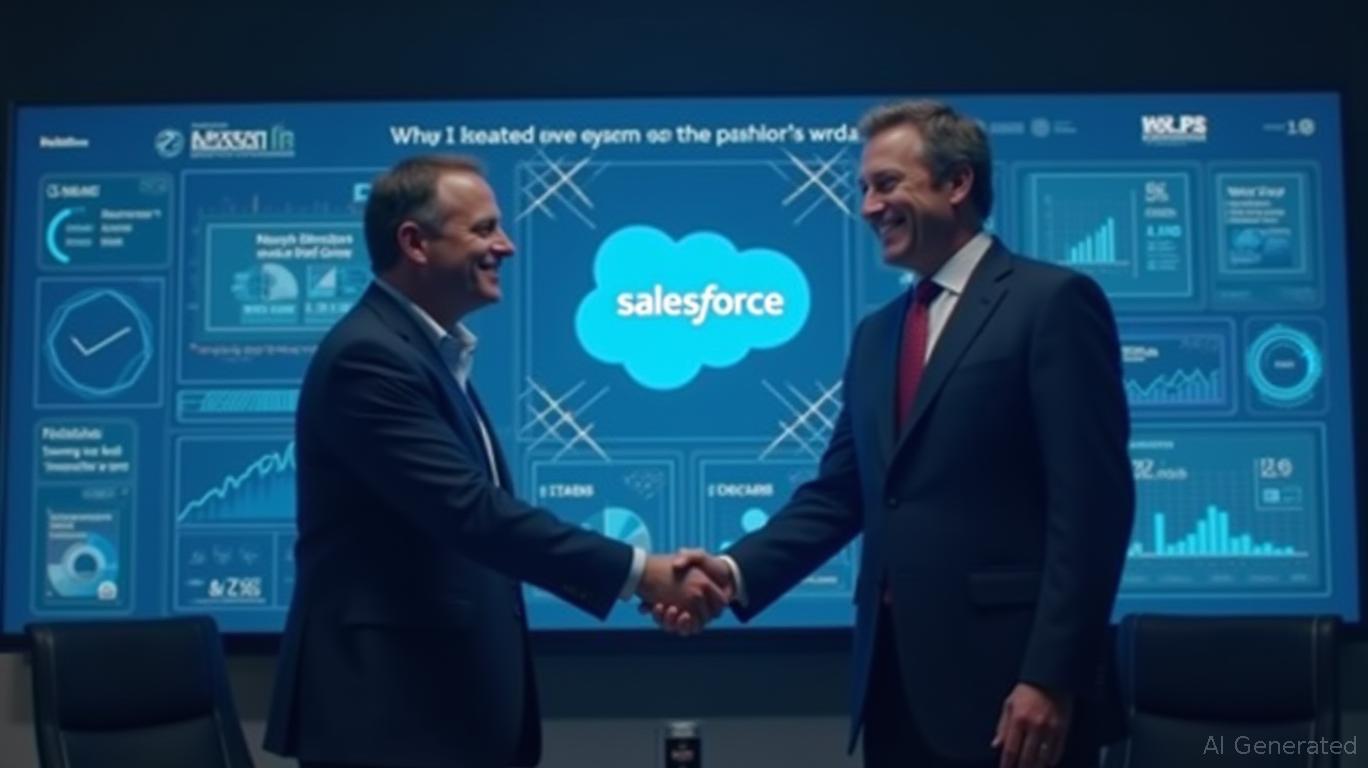Salesforce and Nexstar's AI-Powered Play: Can Automation Turn the Tide in Media?
The media industry is in flux, with traditional TV ad revenue declining as digital giants like
and Meta dominate the market. Nexstar Media Group (NXST), the second-largest TV station owner in the U.S., is fighting back. Its new partnership with Salesforce (CRM)—expanding its use of AI tools like Salesforce Media Cloud and Agentforce—aims to transform how the company operates, compete, and ultimately survive. For investors, this alliance offers a microcosm of a broader trend: the marriage of AI and media, where efficiency and innovation could redefine winners and losers.The AI-Driven Transformation
At the heart of the partnership is Salesforce's AI-powered Media Cloud, a platform designed to unify Nexstar's sprawling operations. With over 200 local TV stations and 1,600 sales personnel, Nexstar's data previously existed in silos—making real-time forecasting and campaign optimization nearly impossible. Media Cloud changes this by consolidating data across systems, offering real-time visibility into ad fulfillment, audience targeting, and revenue streams. Paired with Agentforce for Media, an AI tool that automates tasks like proposal creation and ad pitch generation, Nexstar's sales teams can now focus on high-value activities like client relationship-building.

The immediate gains are clear: Agentforce reduces administrative work by up to 20%, while AI agents (e.g., the “Advertising Proposal” skill) cut time spent on repetitive tasks. But the partnership's ambition runs deeper. By 2026, Nexstar aims to enable 24/7 autonomous campaign management, with AI independently optimizing ad placements and suggesting creative adjustments.
Operational Efficiency Gains: A Lifeline for Legacy Media
For Nexstar, the stakes are existential. Traditional TV ad revenue has fallen 14% since 2020, per eMarketer, as advertisers shift budgets to digital platforms. Salesforce's tools could reverse this trajectory by improving margins and unlocking hyper-localized targeting—a unique strength for Nexstar's station-based model.
Take Agentforce's integration with Salesforce's Data Cloud, which provides real-time, accurate audience insights. This enables Nexstar's sales teams to pitch campaigns tailored to niche demographics, such as viewers of local news segments. Such precision could command higher ad prices, a critical lever in an industry where margins are thin.
The operational synergy also extends to Salesforce's broader ecosystem. By consolidating Nexstar's workflows into a unified platform (including CRM Analytics and Revenue Cloud), the company can spot market opportunities faster—such as identifying undervalued inventory in underserved regions.
Strategic Differentiation and Market Impact
Nexstar's AI push isn't just about cost-cutting—it's a bid to redefine its value proposition. By automating manual tasks, it can reallocate resources to areas where humans excel: crafting creative campaigns, negotiating complex deals, and understanding local markets. This creates a hybrid model where AI handles the “heavy lifting,” freeing teams to focus on strategic differentiation.
For Salesforce, the partnership is a showcase for its AI prowess. Agentforce, already generating $100M in annual revenue, gains credibility as a go-to tool for media firms. The deal could catalyze upselling opportunities across the $600B global advertising industry, where AI adoption is still nascent.
Challenges and Risks
Yet success is far from guaranteed. Scaling AI across 200+ stations poses technical hurdles, such as data integration and workforce training. Nexstar's sales teams will need retooling to work alongside AI—no small feat in an industry resistant to change.
Competitors like Google's Media Services, which recently launched AI-driven ad targeting tools, are also in the race. Nexstar must prove that its hyper-local advantage and Salesforce's AI stack can outperform Google's broader data moat.
Economic risks loom too. A recession could slash ad budgets, undermining the partnership's projected margin improvements.
Investment Considerations
Salesforce (CRM):
The stock trades at a 12% discount to analysts' average price target, despite its AI ambitions. The Nexstar case study could accelerate enterprise adoption of Agentforce, offsetting Salesforce's near-term revenue softness. However, execution risks remain: if the partnership underwhelms, investors may grow impatient.
Nexstar (NXST):
Analysts like Jefferies see NXST's stock as undervalued if operational improvements materialize. A 200-basis-point margin expansion (from ~20% to 22%) could boost earnings by 10%, but delays or ad market headwinds could derail this. For now, NXST's valuation (trading at 8.5x EV/EBITDA) reflects skepticism—a potential buying opportunity if Q3 results show progress.
Final Analysis: A High-Reward, High-Risk Bet
The Salesforce-Nexstar partnership is a bold experiment in AI-driven reinvention. For investors, it's a vote on two propositions:
1. Salesforce's AI platform can deliver tangible ROI for enterprises—not just in media but across industries.
2. Legacy media can reclaim relevance by pairing scale with hyper-local agility, countering digital giants.
The timeline for validation is 12–18 months. Until then, Salesforce's stock is a “hold” with upside potential, while Nexstar is a speculative “buy” for long-term investors willing to tolerate execution risks.
In a media landscape where efficiency and innovation are existential, this partnership could be a blueprint—or a cautionary tale. The verdict hinges on whether AI's promise translates into real-world results.

Comments
No comments yet